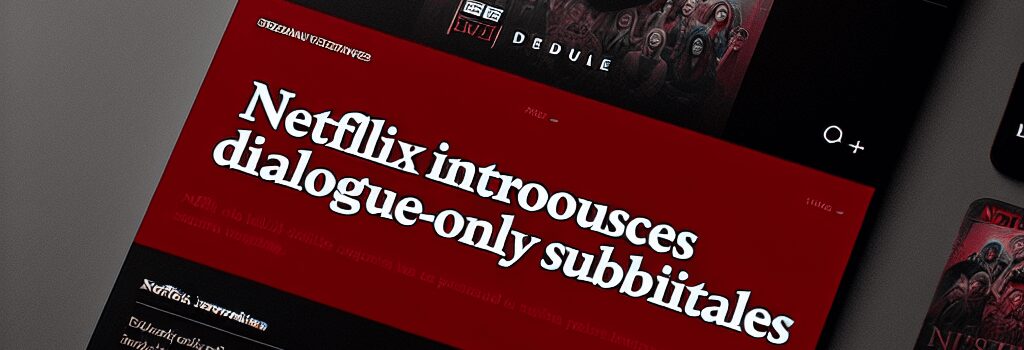Netflix Introduces Dialogue-Only Subtitles

In response to persistent viewer complaints about inaudible dialogue in low-bitrate streams and dynamic-range–heavy mixes, Netflix this month rolled out a new “words-only” subtitle track designed for non-hearing-impaired audiences who simply don’t want to miss a line of dialogue. By stripping out sound-effect cues, music descriptors and speaker tags, Netflix aims to provide a cleaner, more focused reading experience that complements the spoken word without additional clutter.
Why Words-Only Subtitles?
Recent surveys show roughly 50% of American households enable subtitles, though only 10–15% of viewers are deaf or hard of hearing. Modern audio mastering practices—naturalistic performance styles, aggressive dynamic range compression for cinematic impact, and bandwidth-optimized codecs on streaming platforms—all contribute to dialogue that can be hard to follow on built-in TV or mobile speakers. Netflix’s new “English (Dialogue Only)” track omits non-speech descriptions, delivering only the lines as spoken—even when they’re in the same language as the on-screen dialogue.
Subtitle File Formats and Standards
- SRT & WebVTT: The most common text-based formats, now extended with metadata flags that mark non-dialogue cues for filtering.
- TTML & SMPTE-TT: Allows richer styling and timed metadata. Netflix adapts SMPTE-TT to tag only “speech blocks” for this feature.
- CEA-608/708: Legacy broadcast standards that carry both captions and teletext; Netflix transcoded these into modern TTML for archival titles.
Audio Processing and Dynamic-Range Challenges
Netflix streams typically use AAC-LC or AC-4 audio formats at bitrates ranging from 128 kbps (stereo) to 640 kbps (5.1 surround). To meet loudness standards (ITU-R BS.1770 and EBU R128), engineers apply dynamic range compression, which can bury soft dialogue under richer background effects or music. Dolby’s Voice Enhancer and Netflix’s own dialogue boost audio modes use machine-learning classifiers to isolate speech frequencies, but subtitles remain the most reliable fallback for intelligibility on entry-level hardware.
AI-Powered Subtitle Generation
Behind the scenes, Netflix employs a hybrid ASR pipeline—leveraging open-source models similar to Whisper and proprietary neural networks—to transcribe dialogue with under 5% word-error rate (WER). Editors then apply QA checks and use automated tag filtering to remove non-speech items. According to Netflix’s Head of Accessibility, “Our system can now detect and omit over 90% of non-dialogue cues, thanks to fine-tuned transformer models that parse contextual metadata in real time.”
Benefits and Limitations
- Pros: Cleaner visual layout, faster reading speed, better sync with rapid dialogue, supports 20+ languages at launch.
- Cons: Loses ambient context in action-heavy scenes; speaker IDs are removed, which may confuse viewers unfamiliar with character voices.
Future Directions
Netflix plans to roll out dialogue-only subtitles to select legacy titles by Q3 2025, including licensed shows and movies. Industry watchers note that Amazon Prime and Disney+ are evaluating similar features. Standardization bodies like W3C’s TTML 2.0 are discussing metadata categories for “speech only” tracks. Beyond subtitles, the next frontier is real-time multilingual subtitle translation powered by on-device AI and object-based audio metadata in Dolby Atmos for personalized audio mixes.